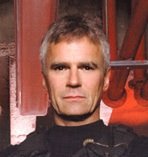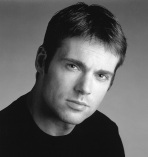
Although he has never publicly credited it as a source of inspiration, I suspect that George Lucas read
Great Expectations as a child, and the
subconscious reverberations of his encounter with the mad, vengeful Miss Havisham are directly responsible for certain traits of the Sith Lord, Darth Sidious / Palpatine, particularly his malevolence and poor hygiene.
The dowager Havisham was jilted on what was to have been her wedding day. Heartbroken, she cloistered herself in her dilapidated mansion, never removing her wedding dress (ew!) and only allowing a few people to see her. With manic, obsessive cruelty, she groomed her adopted child, Estella, to be a vicarious weapon with which to exact her revenge on men. Did I mention that she never took off her gown?
Similarly, Sidious lurked behind a curtain of secrecy and, occasionally, a coarse, oversized black robe, working with an ever-changing retinue of apprentices to engineer the tumultuous events that brought an end (temporarily) to the Jedi Order and the Republic.

It appears that personal hygiene was solely the province of Sidious’s alter ego, Palpatine. He was a sharp dresser and must have taken frequent breaks during his busy schedule for primping. Unfortunately, as the need for Palpatine’s presence diminished over the course of the series, Sidious became more prominent, and, by
Episode VI, he had become a mere stinky shell of his formerly dapper self.
Both Sidious and Havisham are tragic victims of unchecked ambition and, more importantly, poor hygiene and bad fashion sense. In addition, I feel that Havisham missed her calling. Like her progeny, Havisham could appreciate the dark side of the force, with all its smelly, dirty trappings, and she would have made a great Sith Lord.












